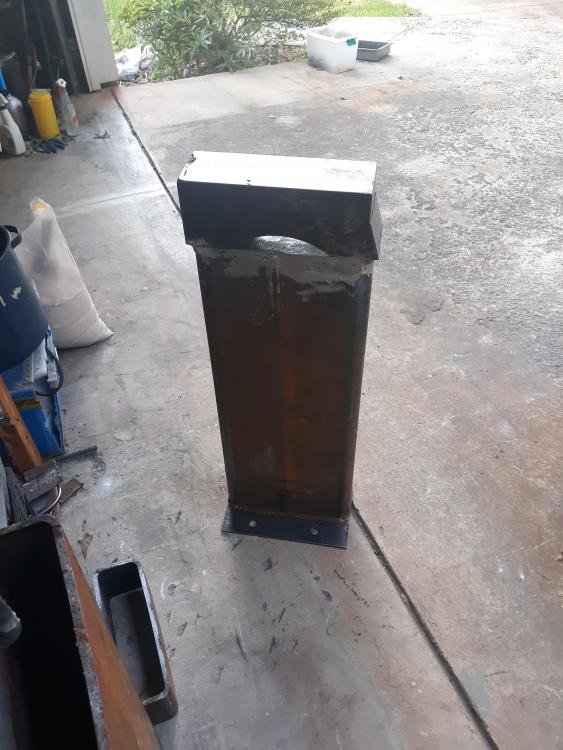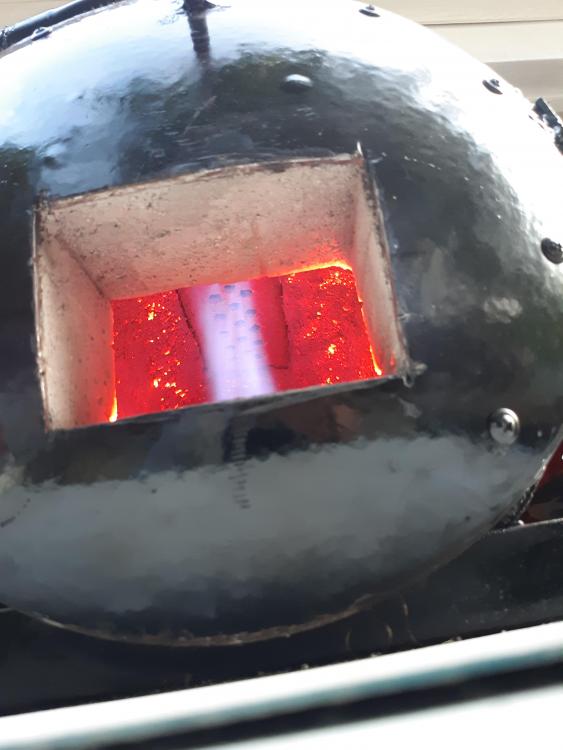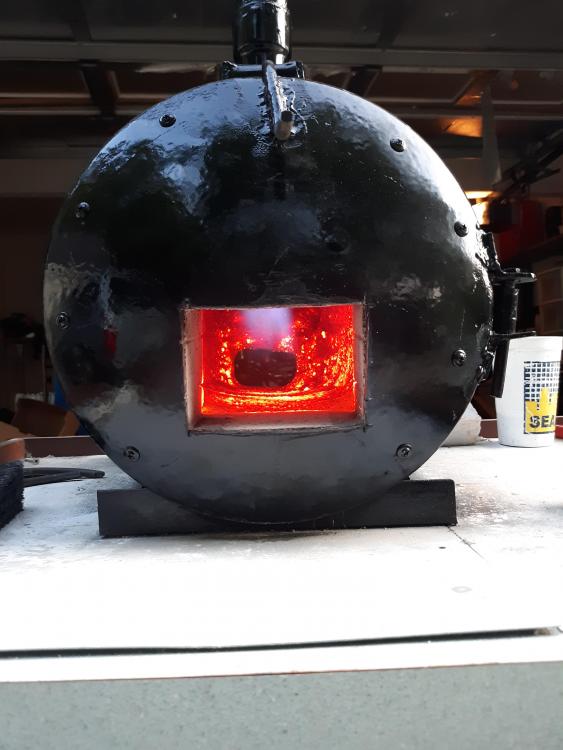-
Posts
16 -
Joined
-
Last visited
Content Type
Profiles
Forums
Articles
Gallery
Downloads
Events
Posts posted by Terrance W
-
-
Found this chunk of steel (just the top piece) on FB Trading post he was just asking $20 Dollars USD, it was right at 67 Lbs. before I had it milled flat, only had to mill the top and bottom 1/8" to get it true.
The base I mounted it on is 4x12 Tube packed with sand and capped off, I don't know the total weight but I'm pleased with the way the steel moves under the hammer on it.
Terrance
-
-
So you are not allowed to use the forge do you have a torch Heat with a torch and hot cut it, that is unless all types of fire is forbidden.
-
As I have posted else where, Cast iron pots and pans will do will with Flack seed seasoning, using an outdoor Fryer/Boiler I heat my cast iron to 400*F apply Flack seed oil and hold till smoking stops and apply another coat. This produces' a deep dark coating that is extremely hard to the point you can use metal utensils without worry of it chipping. I do this once a year to all my cast iron. do not apply too heavy and don't let it pool or it will not dry well and be sticky.
-
I don't recall the exact proportions my first attempt at building a smelting furnace from a 30 Lbs refrigerant tank I mixed Gypsum, perlite, plaster of Paris, Vermiculite. The gypsum (calcium sulfate dihydrate) did not hold up well at all. 2nd try I omitted the gypsum added a small amount of Portland cement, this portion has held up much better, to minimize the spalding in the lower Gypsum section I have applied Sodium Silicate gave it a lite firing and coated the interior with Rutlands fire place patch. this furnace is fired with a simple propane burner. 1-1/4" pipe and a 1/4" copper tube with a 1/32 hole drilled in the side aimed straight down the pipe. I have milted down Aluminum, brass and copper with ease.
-
if you do a google search you will find you can use sand and Plaster of Paris, or Iron oxide.
-
I collected a couple buckets of black walnuts a few years ago, after de-husking them I crushed the hulls and added a gallon of mineral oil, poured off the oil after a week filtered it and had a nice walnut stain.
-
I use Flack seed oil to season my cast iron cook ware,
Pricey yes but a little goes a long way, apply to hot black, hold at hot black till it's dry. It will give a dark brown finish on bright metal and the Finnish is very durable need it darker apply more coats as needed and it is food safe too.
-
In Regard to the 1st original post of his tank freezing up.
I had a similar issue with an aluminum smelter/furnace it turned out I was using a low pressure appliance regulator valve. When I changes it out to a full flow adjustable regulator my problem was solved.
-
I've installed a low side refrigeration gage on my blown bobbin burner set up, installed before the needle valve and measuring the pressure drop to judge the gas flow, 3/8" supply up to the needle valve reduced to a 1/4" copper tubing sealed at the end and drilled orifice of 1/32 drill bite.
LP gas boils off to a vapor/gas at a given rate producing a given line pressure, by measuring the pressure drop you can determine your gas feed rate.
Tried to upload a 114.5mb GIF File but it failed returning a -200 error code.
-
I notice you hooked up a thermocople, what temperature is your forge running at?
-
Then for the lack of a better term, I'll call it a feed pipe, I've not been able to get my paws on any 2" black pipe, the commercial suppliers have a minimum quantity or will only sell a full 28' stick. when I need is maybe 5 feet or so after cutting and threading. I don't have a welder so dose the plenum get to hot to braze it or for 40% silver solder?
-
Speaking of the plenum for a ribbon burner, what are you guys using for the plenum? I was toying with using ABS or PVC for the first half then go to iron pipe closer to the forge, however I'm concerned about static charge building up from the air flow in the "plastic pipe" and sparking off and causing a pre-ignition or worse.




A collection of improvised anvils
in Anvils, Swage Blocks, and Mandrels
Posted
The top Piece is an unknown type of steel, I found it advertised on FB Trading for $20.00 weight was right at 67 Lbs. had the top and bottom milled flat mounted it on the 4x12 Tube Steel packed with sand and capped with 1/2" Plate.
I have planes to use the other 4x12 tube on the left side of the picture to add a 1" plate surface with Prichard and Hardy holes and steel skirt and webbing between the coulombs to hold my tools.